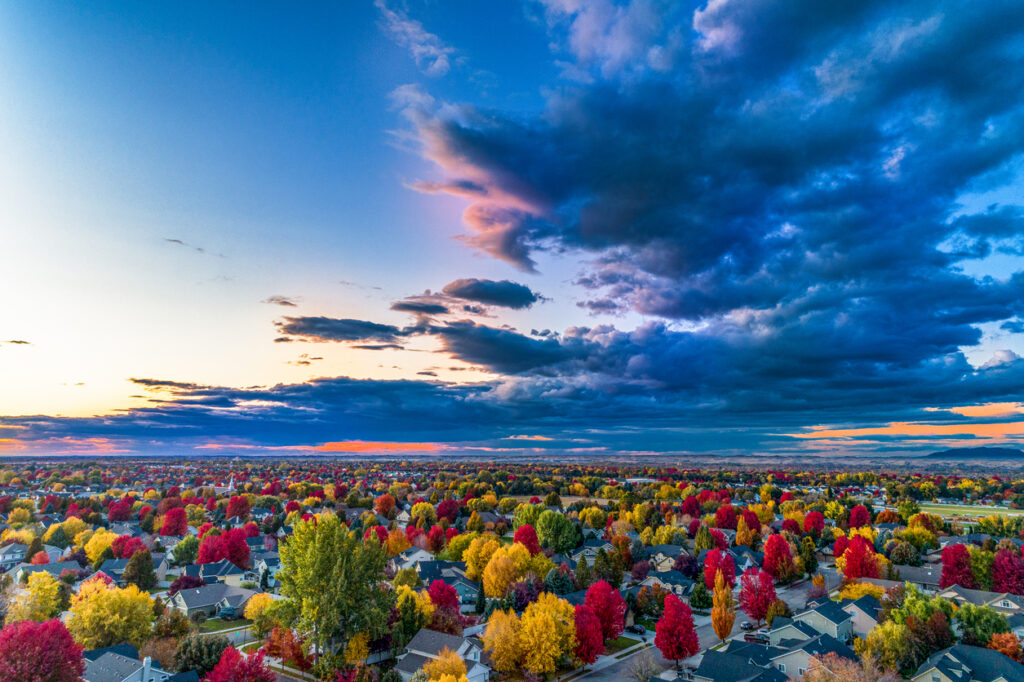The Origins of Boise

Nestled in the heart of the Treasure Valley, Boise, Idaho, stands as a vibrant testament to nature’s beauty and human ingenuity. The city’s name, “Boise,” is derived from the French word “Les Bois,” meaning “the woods” or “the trees.” This name was given by French-Canadian fur trappers who were among the first Europeans to explore the area in the early 19th century. According to local legend, these trappers, upon emerging from the arid landscape of the Snake River Plain, were overjoyed to see the lush, tree-lined riverbanks of what is now the Boise River, exclaiming “Les bois! Les bois!” in delight.
A City Flourishing with Trees

Boise’s nickname, the “City of Trees,” is more than just a charming moniker; it reflects the city’s rich arboricultural heritage and its commitment to preserving its natural beauty. The city is renowned for its extensive urban canopy, with thousands of trees lining its streets, parks, and public spaces. This lush greenery not only enhances the city’s aesthetic appeal but also contributes significantly to the quality of life for its residents.
Historical Milestones in Boise’s Arboreal Heritage

- Early Settlement and Arboriculture:
- When Boise was officially established in 1863, settlers recognized the importance of trees for shade, building materials, and aesthetic pleasure. They planted a variety of species, creating the foundation for the city’s lush urban forest.
- Morris Hill Cemetery and Julia Davis Park:
- In the late 19th and early 20th centuries, Boise saw the establishment of significant green spaces like Morris Hill Cemetery and Julia Davis Park. These areas were designed with a focus on incorporating diverse tree species, providing both beauty and shade.
- Boise River Greenbelt:
- The Boise River Greenbelt, a 25-mile long pathway that follows the Boise River through the heart of the city, is one of Boise’s most cherished natural features. It showcases a wide variety of trees and serves as a habitat for local wildlife, offering a serene escape for residents and visitors alike.
The Trees of Boise
Boise’s diverse tree population includes both native and non-native species, each contributing to the city’s unique landscape. Some of the most notable trees in Boise include Cottonwood Trees, Maple Trees, Evergreens and Ornamental Trees.
Cottonwood Trees

Native to the Boise River’s banks, these majestic trees can grow up to 100 feet tall and are known for their broad leaves and cotton-like seeds.
Maple Trees

Both native and introduced varieties thrive in Boise, offering brilliant displays of color in the fall.
Evergreens

Ponderosa pines, Douglas firs, and other evergreen species provide year-round greenery and are a nod to Idaho’s extensive forested areas.
Ornamental Trees

Cherry blossoms, crabapples, and other ornamental species add bursts of color and fragrance throughout the city in the spring
Celebrating National Tree Day in Boise

National Tree Day provides an opportunity for Boise residents to appreciate the city’s rich arboricultural heritage and to participate in activities that promote the planting and care of trees, such as tree planting events, educational workshops, nature walks and tours, and community clean-ups. We should all strive to expand the urban canopy by planting new trees in parks, schools and public spaces, learn tree care and maintenance to protect trees in our environment, and participate in clean-up efforts to ensure that Boise’s green spaces remain pristine and welcoming for everyone to enjoy.
Boise’s designation as the “City of Trees” is a source of pride for its residents and a testament to the city’s commitment to preserving and enhancing its natural beauty. As Boise continues to grow and evolve, its trees remain a constant, making our city a unique and beautiful place to live and visit. On National Tree Day, let’s ensure that Boise remains a city of trees for generations to come as we continue to plant, protect and preserve all of our cherished trees. Happy National Tree Day, Boise!

